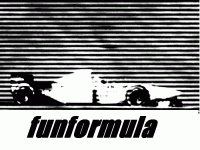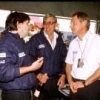funformula, on 17 Feb 2019 - 15:55, said:
I question myself how close the coopration in the design process between a race car designer and a race engineer may be.
In the "Stefano Modena" thread, Nigel Beresford gave insight to a almost totally useless front suspension/damper activation on the Tyrrell 017 car.
I´m no engineer but unlike the understanding of the aerodynamics on a race car (which probably can be some kind of black magic) I presume the mechanical functionallity of a system can be detected quite easily in comparison.
Had a race engineer to cope with what he gets from the design office or is there (or should be?) some interaction beforehand in the design process?
This is an interesting question and it really depends on the team and the maturity of the design of the car. I wasn't a race engineer when the 017 was being designed - I was a designer. I drew up the wind tunnel model and various other bits and pieces of the car but I had only been employed as an engineer in F1 for about a year when that car was being laid out and I wasn't about to go second guessing Brian Lisles, who is a very good engineer and remains a good friend. Yes of course once the 017 proved to be a poor car for all sorts of reasons then everybody chipped in with their opinion about why it was bad, and one learned a lot as we tried to improve the car. That is always the way - you don't learn half as much from running a good car as you do from trying to fix a bad car. Sometimes a "good" car isn't necessarily all that good - it's just that the competition's efforts were even poorer! Sometimes a "bad" car isn't so bad - it's just that the drivers weren't able to realise its full potential because they weren't that special! Sometimes it's not the car itself that is poor, but rather that a change in philosophy from the tyre supplier can turn a measurably superior evolution of the previous year's successful car in to an ill handling mess.
In terms of the interaction between race engineer and design department, obviously during the current season you feed back to the technical boss of the team all of the things that could be improved for next season. You compile a document that collates ideas and requests which cover the whole range of activities of building, maintaining, setting up, running and racing the car. You obviously feed back if you need to be able expand or shift the range of stiffnesses that can be achieved, or downforce or drag levels. You figure out if you think you need to be able to achieve higher or lower roll centres and anti lift or anti squat geometries or cambers or whatever (depending on what kind of car it is - I learned vastly more about mechanical setup when I went to CART from F1, where everything is about aero). You will poll the mechanics for their needs to improve serviceability or accessibility (though that is always tempered by the need to avoid making an easy-to-work-on-but-slow car). Such requests normally centred on the fuel system, which is always a horrible thing to have to maintain because the access holes in the chassis are normally only big enough to get one hand in at a time, and are usually sited for the best structural reasons rather than accessibility, and the poor mechanic has to work without really being able to see what he is doing while breathing pretty noxious fumes. We did what we could at Penske, asking Ilmor to develop quick release couplings for the in-tank lines that could be operated with a single hand. The race engineer contributes to the specification of the new car but ultimately the responsibility and decision making lies with the chief designer. The race engineer's guidance and opinion becomes more important once the car has been run and the areas limiting performance have been identified.
Thanks, Nigel






















